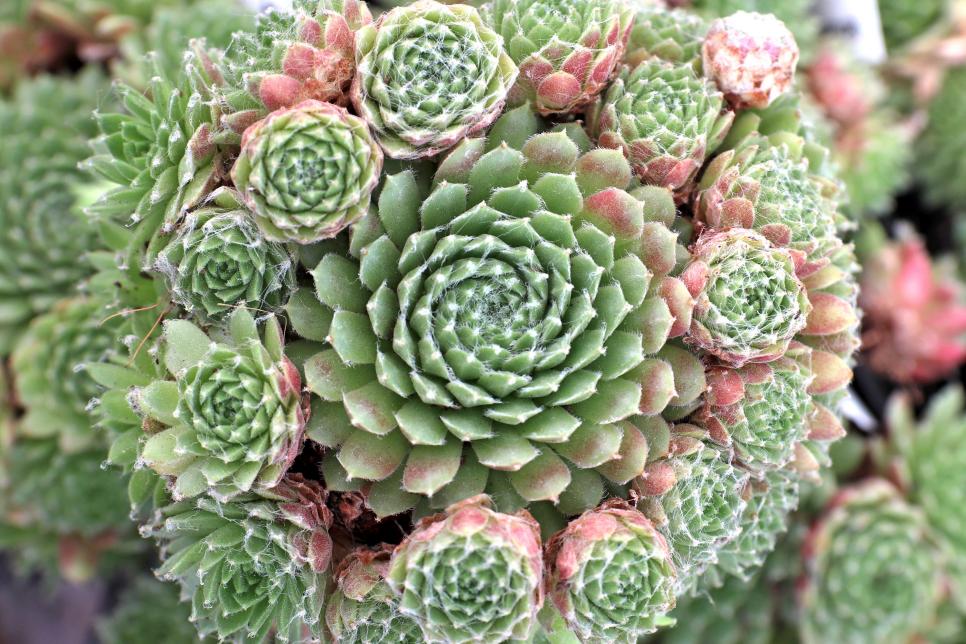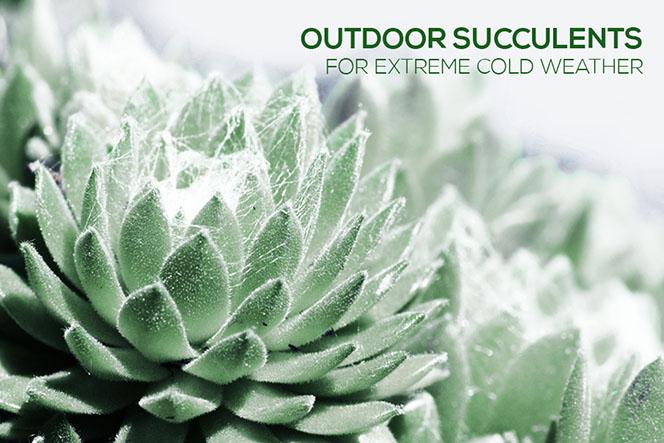If you live in an area with four distinct seasons, especially cold winters, there are some species of succulents that can survive outdoors all year round, though most will not.
All succulents have different temperature requirements, but none of them can survive in cold temperatures for a prolonged period.
Despite being overlooked, there is a huge variety of cold-tolerant succulents that often go unnoticed. Many people are unaware of their existence or the extent of their diversity.
When you buy items through links on this website, we may receive a commission. There is no additional fee for you. This helps us give you access to free content.
Sempervivums, Sedums, and Opuntia cacti are great choices if you want to maintain a stunning succulent garden outdoors even when temperatures drop to very low levels during winter.
At the start of my journey with succulents, I was based in Utah with a Zone 5 climate. I was predominantly growing succulents inside as I was unaware that some succulents could manage the cold temperatures and snow.
Luckily, I was able to find Mountain Crest Gardens, which I believe is the biggest supplier of cold-resistant succulents. They really made a big difference in my garden of succulents.
The succulent nursery is situated in a mountain valley close to Mount Shasta in northern California, and the area receives plenty of snowfall during the winter. You won’t find a more stunning selection of cold-resistant succulents anywhere else.
It’s amazing that Sempervivums, Sedums, and Opuntia (or “Prickly Pear cactus”) can thrive in both warmer and cooler climates.
The video below provides further information about the types of succulents that can withstand cold temperatures.
I planted a variety of Sempervivums and Sedums in the ground for my parents in Utah, but I also brought several large pots of them with me to Arizona. I’m going to add some Opuntia, which are cold-hardy, to my collection here as well.
If you’re not sure what Sempervivums look like, they usually form perfect rosette shapes and are much hardier than other rosette-shaped succulents, like Echeverias. They come in a wide variety of color combinations, ranging from pinks, reds, and purples to greens, yellows, and blues, so you can find something to fit any color scheme.
Sedums are highly versatile, making them a great addition to any succulent collection. These cold-tolerant plants can be used as a ground cover, with a wide range of shapes, textures and colors. When paired with Sempervivums, they can create a stunning, cascading display that tumbles over the sides of a pot.
I was quite taken aback a few years ago when I visited Waterwise Botanical Gardens in Escondido, California and saw their new line of cold-hardy Opuntias. Even though they look like regular Prickly Pear cactus on the outside, they have the most gorgeous flowers in the springtime that you can only find on succulents.
I am particularly fond of the Opuntia “Pina Colada” variety, which has a bloom that is ever-changing. On some days, the flower shows an orangey-pink hue, while other days it is yellow with pink and orange stripes in the center.
It’s amazing that Mountain Crest Gardens and Waterwise Botanicals have joined forces to make it possible to purchase cold-resistant Opuntias on Mountain Crest Gardens’ website.
If you live in a region with four distinct seasons, you should definitely consider adding succulents to your garden. You’ll find it very satisfying to have some color and vibrancy in the midst of winter. Plus, watching the Opuntias bloom in the springtime is a truly special experience!
I’m constantly astonished by how the hardy succulents manage to return with vivid, vibrant hues, even after being buried by snow for months. It’s incredible!
Table of Contents
Non-cold hardy succulents
Succulents like Echeverias, Aeoniums, Haworthias, most Aloes, and many other varieties cannot be left outdoors in winter when there is snow and ice.
If the cold temperatures will only be present for a short while, you can protect your plants by covering them with a frost cloth or other type of blanket. However, this is not a permanent fix.
You can determine what succulents will work in your outdoor space by looking up your growing zone. Research the succulents you have and check their temperature ratings to make sure they are suitable for the climate in your zone.
For further information on how to look after your succulents in the winter, read our article about winter maintenance.
FAQ
How do you take care of potted succulents in the winter?
Succulents go into a state of dormancy during the winter, so they need much less water during this time. Therefore, once the temperatures drop and the days become shorter, stop watering them completely. However, checking the soil for moisture levels is recommended once a month in case it needs a little bit of water.
Should I bring my potted succulents inside for winter?
You need to move your tender, non-cold-hardy succulents indoors before the temperature drops below freezing. Take the time to examine the pot for any bugs, such as ants or spiders, and remove them. Additionally, clear away any dead leaves, twigs, or other debris from the soil’s surface.
Where should I put my succulents in the winter?
To keep succulents safe during the winter months, it is important to prevent them from being exposed to freezing temperatures. This can be done by bringing them indoors, placing them on a covered porch, finding a spot that receives ample sunlight, situating them near a sheltered wall, or relocating them to a greenhouse or conservatory.


